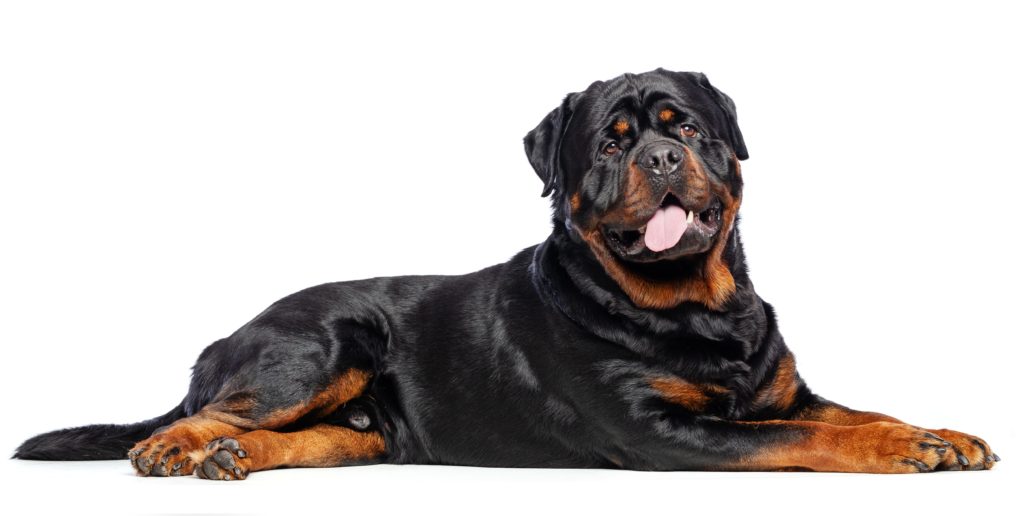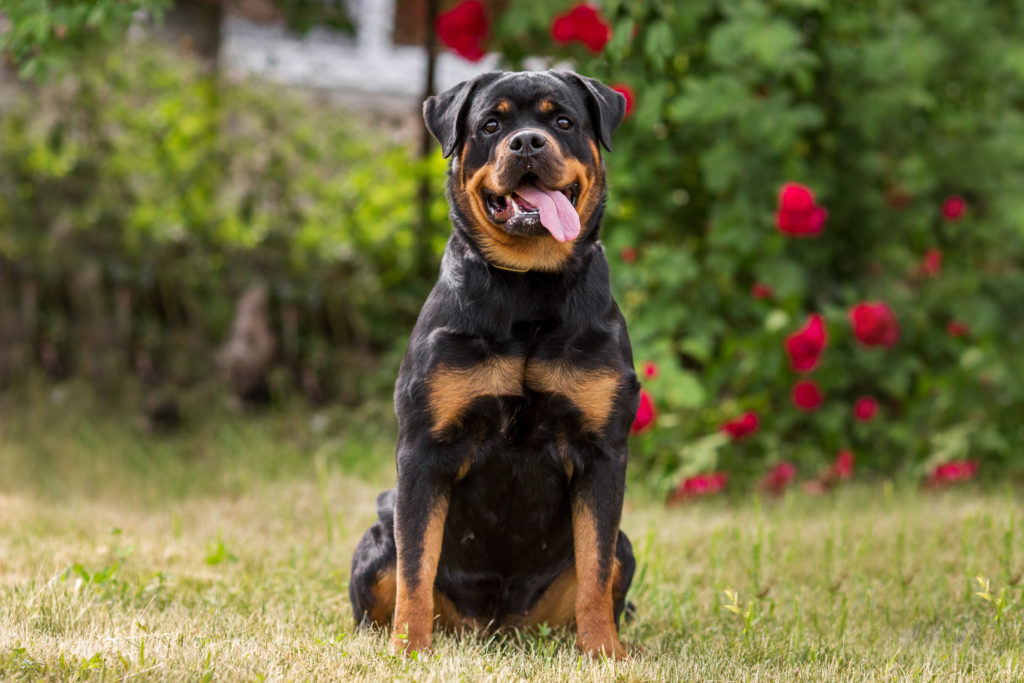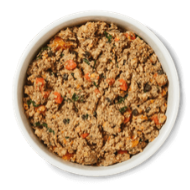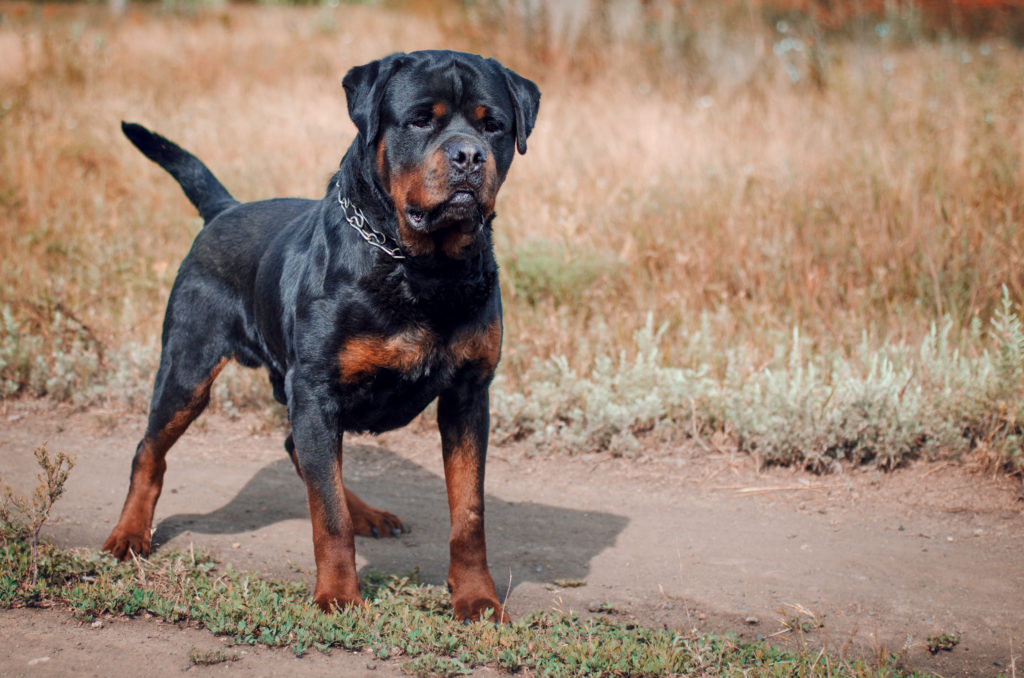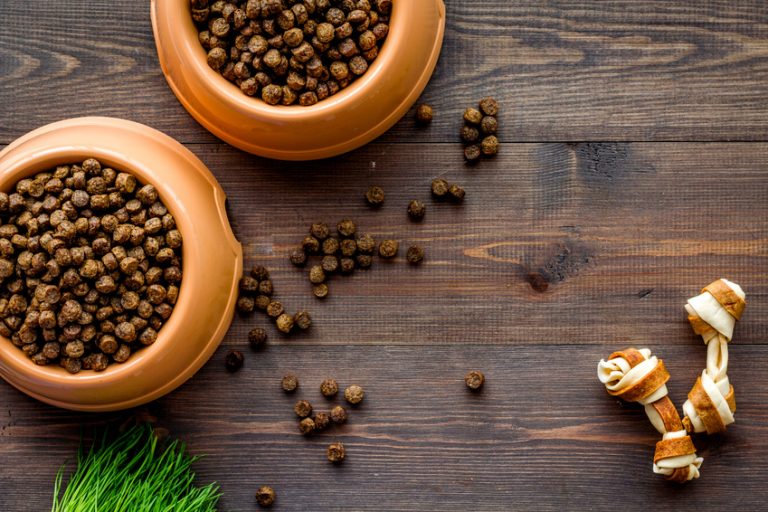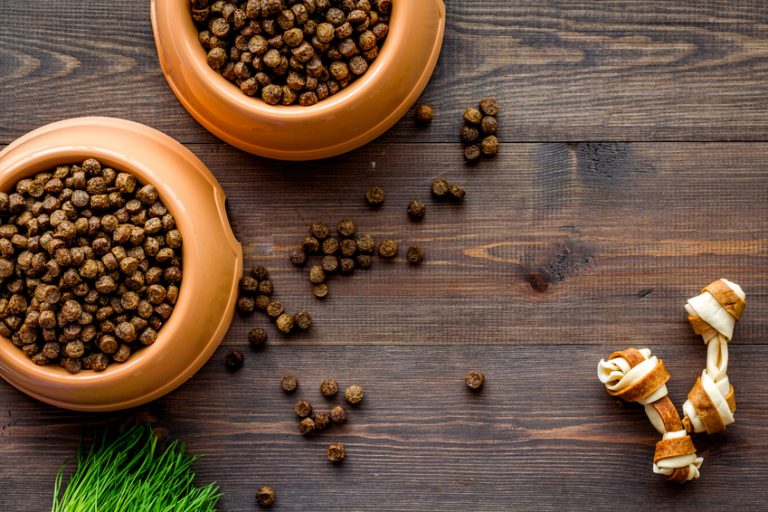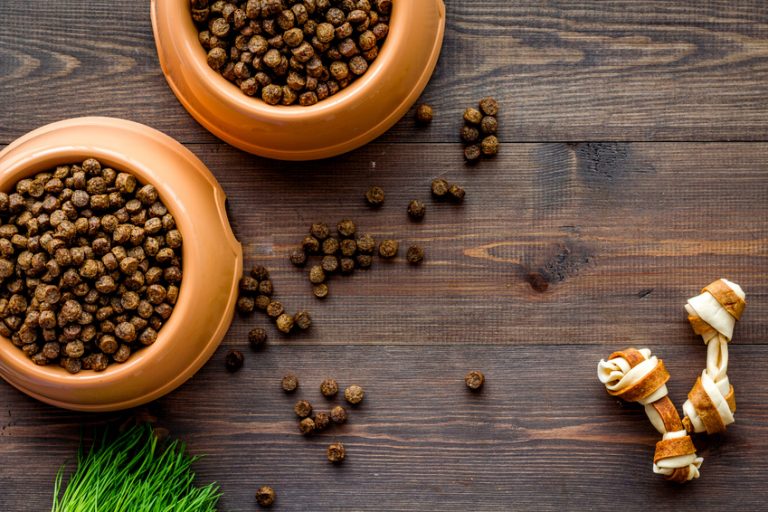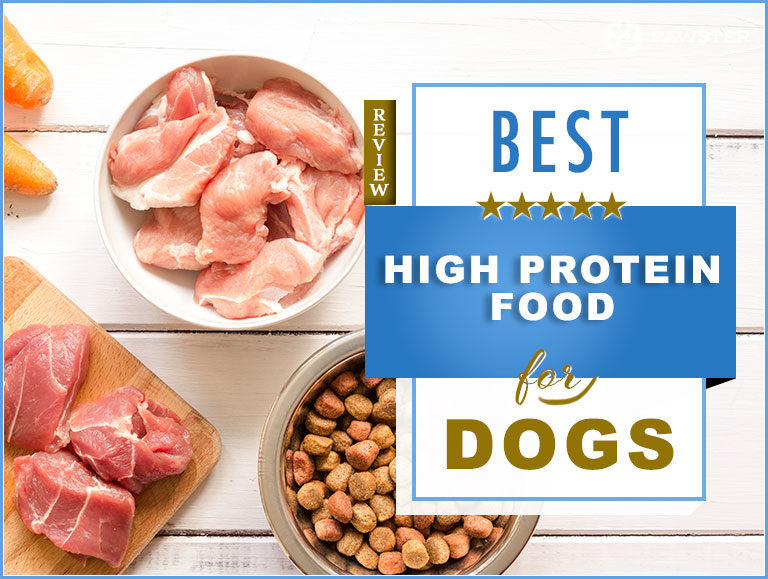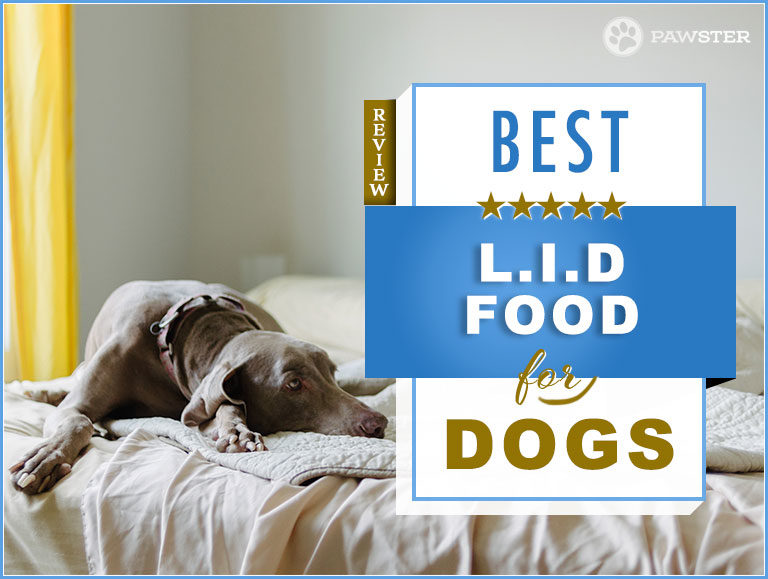Best 7 Foods to Feed your Adult and Puppy Rottweiler in 2024
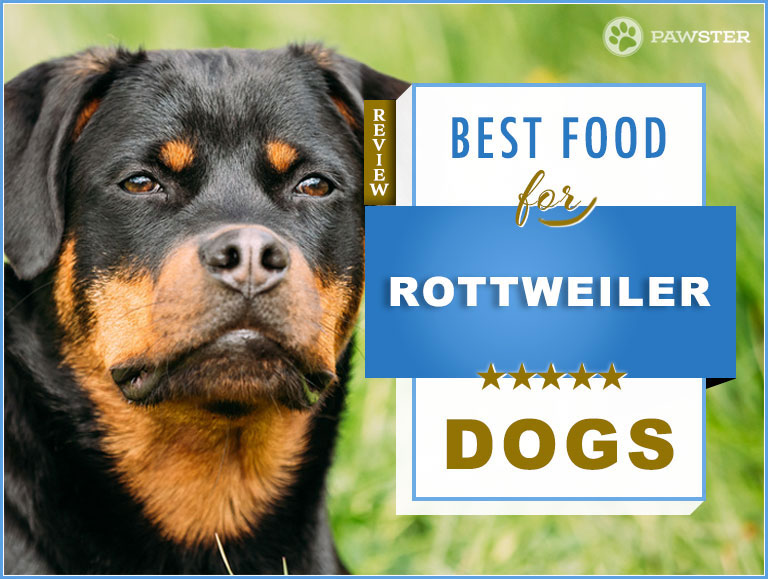
Contents of Article
Rottweilers are a medium-large breed in height but they can weigh well over 100 pounds. Rotties enjoy physical exercise and need a couple of good workouts every day. They are really happy if they can get you to play and exercise with them. The Rottie’s coat is easy to care for with regular brushing. They shed seasonally. Rottweilers currently have a life expectancy of 8-10 years but research is underway to find ways to lengthen the breed’s lifespan.
What is the Best Dog Food for Rottweilers?
-
- Ollie Healthy Turkey Feast Fresh Dog Food
- Now Fresh Grain Free Large Breed Adult Recipe
- Wellness Large Breed Complete Health Adult Deboned Chicken & Brown Rice Recipe
- Fromm Large Breed Adult Gold
- Holistic Select Large & Giant Breed Puppy Health
- Eagle Pack Large & Giant Breed Puppy
- Fromm Heartland Gold Large Breed Puppy
General Nutritional Recommendations
All dogs need basics in their diet such as protein, fat, and carbohydrates, along with vitamins and minerals. Protein, fat, and carbohydrates are all sources of energy for your dog. Protein is important because it helps build lean muscle. It supports your dog’s immune system And it contributes to skin and coat health. It also helps your dog’s cells repair themselves and helps heal wounds. All dogs, regardless of their age, can benefit from more protein in their diet. The only exceptions would be if your dog has a health issue such as serious kidney failure which might require a reduction in dietary protein. Even with kidney disease, current research shows that unless your dog has severe kidney disease, there is no reason to cut back on protein.
Many dog foods today use high levels of plant proteins such as peas and lentils. Plant proteins are less expensive than most meat proteins so some dog food companies favor them. These ingredients have also been offered as a substitute, in some instances, for the proteins that were formerly supplied by grains in some foods – grains such as corn and wheat. Peas and lentils may be better for your dog than corn and wheat but dog owners are still left with the same issue of whether they want to feed their dogs plant sources of protein. And, how much plant protein is acceptable in a dog food?
Dogs can digest plant protein but not as efficiently as they digest animal protein. If you feed your dog a food that contains mostly plant protein, you will probably need to feed him more protein than if he were eating a diet that relied on animal sources of protein. You have probably noticed that many grain free dog foods that contain lots of peas and lentils are very high in protein, even if they don’t have high amounts of animal protein. When looking at dog food ingredients it’s generally better to look for foods that contain good animal sources of protein; or foods that contain both animal and plant sources, with the emphasis on animal sources of protein.
AAFCO (the Association of American Feed Control Officials) recommends that adult dogs such as Rottweilers have at least 18 percent protein in their diet http://tinyurl.com/y9uqwexx. Growing puppies need at least 22 percent protein in their diet.
Good quality dog foods today are often very high in protein so you should not have any problem finding dog foods that meet these recommendations. Canine nutritional experts today generally recommend foods with higher (animal-based) protein, moderate fat, and low carbs for healthy adult dogs. If your Rottweiler has a health issue you should consult your veterinarian or a canine nutritional expert for advice about his diet.
Good quality sources of animal protein include foods such as meat, poultry, eggs, and fish. Amino acids are the “building blocks” of protein. Animal sources of protein usually have complete amino acid profiles which means they include all 10 of the essential amino acids that a dog needs. “Essential” means that the dog’s body can’t synthesize the amino acid by itself so the amino acids have to come from foods or supplements in the diet.
If you are curious about the amino acid profile of meat or poultry you can check it on a reputable food web site. For example, look up an egg. If you scroll down you will see a section for the amino acid profile. Only nine essential amino acids are included here since humans only need nine (though dogs need 10). Arginine, which dogs need, is not included. However, the profile for the egg is complete for these nine essential amino acids. If you scroll down a little farther you will see another section called “Protein & Amino Acids.” This section lists all of the amino acids. Arginine is included here. You can see that the egg has plenty of all of the amino acids. You can check any meat, poultry, fish, or other food item this way to see what its amino acid profile looks like. If you check lentils, they have a lower amino acid score. They are lacking in Methionine+Cystine, though you could add an animal protein to help balance them out.
If a dog food relies heavily on plant proteins such as peas and lentils, the company may have to add amino acids to the food to make it a balanced diet. This is one of the reasons why it’s important for a quality dog food to have an animal-based protein as one of the first ingredients. If your dog isn’t getting the essential amino acids he needs in his food then he’s not getting a balanced diet. Even if he is getting the essential amino acids, if they are not easy to digest, your dog may not be able to benefit from them.
Per the Whole Dog Journal:
In today’s highly competitive dog food market, dog owners have been besieged with information about “protein quality.” Some scientists argue that the source of a protein doesn’t matter, as long as all amino acids are present in a form the dog can utilize. But “quality” does matter; it refers to the amount that must be consumed by the dog in order to fulfill his amino acid requirements. Therefore, the factors of digestibility and amino acid levels and types determine protein quality. The higher the biologic value of a protein, the less the amount of that protein is needed in a diet.
This means that if you’re feeding your Rottweiler a good quality dog food with protein that has a high biologic value, which is often found in animal proteins, you will probably be able to feed less of the food. This is because your dog will be able to digest the food better and use it more efficiently.
In addition to your Rottweiler’s need for protein, he also needs good quality fat in his diet. We usually think of fat as something to avoid in the human diet but fat is necessary for your dog. It gives him energy. Fatty acids such as omega-3 and omega 6 support good skin and coat health. Essential fatty acids (EFA) help your dog absorb vitamins A, D, E, and K. Again, fats from animal sources are better for your dog than fats from plant sources in most cases. Your dog is able to use them more efficiently. Some good sources of animal fat for your dog include chicken fat and salmon oil, along with fish oil in general. You will often see a plant source of omega3 fatty acid such as flaxseed oil included in dog foods but this source is problematic for dogs. While salmon oil and other fish oils provide EPA and DHA, the active forms of omega-3, flaxseed oil comes in the form of alpha linolenic acid (ALA). This is an inactive precursor to EPA and DHA. Dogs have a hard time converting ALA to EPA and DHA so the flaxseed oil is not very helpful as a form of omega-3.
According to AAFCO adult dogs need a minimum of 5 percent fat in their diets. Puppies should have a minimum of 8 percent fat. Puppies grow rapidly during their first year, especially during their first four months, so they need lots of energy and calories. EPA and DHA – those omega-3 fatty acids – are particularly good for puppies. They help with brain and eye development, among other things. Many good quality puppy foods today include these fatty acids in their formulas. You probably won’t need to worry about these fat minimums in dog foods. Nearly all dog foods today have higher fat percentages than these minimums with the exception of some weight reduction/low calories dog foods. It’s more likely that you will need to worry about dog foods that have fat percentages that are too high. Some dog foods today have fat percentages that are very high. Performance dog foods sometimes have an “as fed” or guaranteed analysis fat percentage of 20 percent or more. The dry matter basis (DMB) fat percentage will then figure out to be even higher. These foods should only be fed to dogs doing hard work (hunting, sledding, herding, coursing) or pregnant dams. If you feed a dog food with this much fat to the average pet who only gets moderate exercise, he will soon be obese.
Most dog food experts suggest that a healthy adult dog, living as a pet without doing any strenuous work, should eat a food that has a fat percentage that’s about half of the protein percentage. For example, if you’re feeding a dog food that has 28 percent protein, a fat percentage of about 14 percent would be appropriate. Dog foods that have between 12 and 16 percent fat (dry matter basis) are usually considered to be moderate in fat by today’s dog food standards. Likewise, dog foods with a protein percentage somewhere between 24 and 32 percent (DMB) would be acceptable for most healthy adult dogs. Many good quality dog foods today meet these criteria.
Many people think that dogs don’t “need” carbohydrates but this isn’t really true. Filler ingredients in poor quality foods are often carbs so many people have condemned all carbohydrates. This is unfortunate. Some carbohydrates are important for your dog’s health. They are one of the main sources of energy for your dog. They also help digest other nutrients in the body in the form of prebiotics and dietary fiber. Rice, corn, potatoes, sweet potatoes, peas, lentils all contain large amounts of complex carbohydrates. These ingredients don’t have to be fillers or substitutes for meat protein. Used in appropriate amounts, they can be helpful additions to a dog food formula. There are plenty of other ingredients such as vegetables and fruits that you have probably seen on dog food labels that play a role as carbohydrates. Beet pulp and chicory are just two carbohydrates that you may recognize as prebiotics.
In addition to providing energy for your dog carbohydrates also help with digestion. Insoluble carbohydrates are better known as a source of fiber. This fiber doesn’t break down in your dog’s gut but it does absorb water. Not only does this help your dog feel full but it helps your dog move food material along his gastrointestinal tract – it helps him stay regular. Too much of this kind of insoluble carb/fiber can lead to loose stools, flatulence, and gastrointestinal upset but many dog foods today include some insoluble fiber in their formulas. You’re more likely to find large amounts of insoluble fiber in weight control dog foods or lower quality foods. You should check the kind of carbs in your dog’s food and the overall fiber percentage. Most kibbles today have between 3.3 and 6 percent (DMB) fiber.
Carb percentages in kibble today can range from 30 to 50 percent, or higher. Dog food companies are not required to list the carbohydrate percentage but you can check dog food reviews on Pawster. Or you can figure the dry matter basis (DMB) for a food yourself. You may have to guess the ash percentage for a food to do this. (You can usually get accurate figures for the ash content or the carbohydrate percentage if you contact the company directly.) Most dog food experts suggest that a good dog food should not have more than 20 to 30 percent carbs but it can be difficult to find many foods with carbohydrate percentages this low. We recommend looking for foods with low to moderate carbs but don’t be surprised if many of the foods you like have carb percentages that are a little higher. Even many good dog foods today have somewhat higher carb percentages.
Your Rottweiler also needs certain vitamins and minerals in his diet. While it’s nice to think that your dog can get all of his vitamins and minerals from the food ingredients in a dog food, most pet foods are cooked at such high temperatures that the nutrients can lose some of their potency. To make up for this loss, dog food companies usually add additional vitamins and minerals to the food. Many companies source some of their vitamins and minerals (known as “condiments” in the pet food industry) from countries outside the U.S. such as France, Canada, China, and elsewhere. If this concerns you, you can often find the information on a company’s web site (check the FAQ section). Or contact the company directly. For some minerals there may be few options but you should let a company know that you have concerns about where ingredients are sourced.
Many dog foods today also include probiotics or digestive enzymes (“fermentation products”) for improved digestive health. These are noted in the ingredient list.
We recommend that you avoid foods that contain artificial colors, flavors, and sweeteners, as well as artificial preservatives. Artificial preservatives include ethoxyquin, butylated hydroxyanisole (BHA), butylated hydroxytoluene (BHT), tert-butyl hydroquinone (TBHQ), and propyl gallate. Vitamin E, Vitamin C, and certain plant extracts such as rosemary oil are often used as natural preservatives. Natural preservatives will not keep a food fresh as long as artificial preservatives but they are better for your dog.
What is the Best Dog Food for My Rottweiler?
Many good quality dog foods are formulated to be good for all dogs, regardless of their age or size. These foods are usually AAFCO-approved for “All life stages.” You may want to start by looking at some of these foods for your Rottweiler. You can feed these foods to puppies, adults, and to senior dogs. They can be a good choice throughout your dog’s life. You will need to watch the calories and notice if your dog is gaining or losing weight on the portions you feed. Or, you can look for dog foods that are formulated especially for large breeds. Do be aware that many large breed adult dog foods are maintenance formulas so they are not suitable for pregnant dogs or puppies. Large breed puppy foods are specially formulated for large breed puppies but you should not feed them to a pregnant dog. They won’t have enough calories for reproduction.
Ollie Healthy Turkey Feast Fresh Dog Food
Healthy Ingredients : Turkey breast, turkey liver, kale, carrots, lentils
Key Features :
- Human-Grade
- Subscription-based
- Slow cooked for nutritional integrity
- Auto-ships direct to your door
Ollie Healthy Turkey Feast Fresh Dog Food
Ollie Healthy Turkey Feast Fresh Dog Food is a fresh, human-grade dog food option that is delivered to your doorstep based on your subscription and your dog’s needs. It is slow-cooked in small batches and can be stored in your fridge or freezer.
Fresh food options are becoming more popular in the world of pet food, as they have in the world of human food. People are realizing that a fresh food diet is great for them, so why not for their pets, too! Ollie fresh dog food boasts human-grade recipes delivered fresh to your doorstep based on a delivery schedule that you can customize. The cost is higher for fresh food as compared to regular dog food, but it has a lot of great benefits for keeping your dog healthy and active. Ollie has a few different recipes that you can choose from based on which protein you select. The Healthy Turkey Feast includes carrots (which are full of phytonutrients for eye health), blueberries (which are high in antioxidants), and chia seeds which are a source of copper, zinc, and manganese. All Ollie dog foods are cooked slowly to preserve nutrients and they don’t use any preservatives or fillers. They also include super foods such as chia to help support your pet’s active lifestyle. You can rest-assured, when feeding your dog Ollie, that you are choosing a premium food.
Now Fresh Grain Free Large Breed Adult Recipe
Healthy Ingredients : De-Boned Turkey, Whole Dried Egg, Potatoes, Peas, Potato Flour
Key Features :
- Supports healthy joints
- Supports heart health
- No grain or gluten
- Helps burn fat and turn it to muscle
Now Fresh Grain Free Large Breed Adult Recipe
Now Fresh Grain Free Large Breed Adult Recipe is grain, gluten, corn, wheat, and soy free. It doesn’t use any meat by-products or artificial preservatives. It supports healthy joints and a healthy heart, too.
Now Fresh Grain Free Large Breed Adult Recipe uses 100 percent fresh turkey, salmon, and duck in this formula. It has no grains, gluten, wheat, beef, corn, or soy. And no rendered meats, by-products, or artificial preservatives. This large breed formula includes New Zealand green mussels and glucosamine/chondroitin for good hip and joint health. It has added L-Carnitine to help burn fat and keep your dog slim. L-Carnitine also supports a healthy heart. It has added pre- and probiotics for good digestion. And it has added Taurine to support vision and heart function. It has 27 percent crude protein and 13 percent crude fat, with 363 kcal/cup. Made by Petcurean, Now Fresh is a Canadian food that is easy to find in the U.S.
Wellness Large Breed Complete Health Adult Deboned Chicken & Brown Rice Recipe
Healthy Ingredients : Deboned Chicken, Chicken Meal, Ground Brown Rice, Barley, Peas
Key Features :
- Source of fiber
- Supports healthy joints
- 26% protein
- Supports digestive health
Wellness Large Breed Complete Health Dog Food
Wellness Large Breed Complete Health Adult Deboned Chicken & Brown Rice Recipe has 26% protein, glucosamine and chondroitin to support joint health, and complex carbohydrates for energy. It is also a great source of fiber and essential nutrients.
Wellness Large Breed Complete Health Adult features glucosamine and chondroitin for strong joints; fiber and probiotics for digestive health; high quality nutrients for optimal energy; vitamins and minerals for a healthy immune system; and omega fatty acids for healthy skin and coat. The first five ingredients are: deboned chicken, chicken meal, ground brown rice, barley, and peas. It has 26 percent crude protein and 12 percent crude fat, with 340 kcal/cup. This formula does include ground brown rice, oats/oatmeal, and barley but these grains don’t usually cause problems for dogs, even if they have food sensitivities to grains such as corn or wheat. Barley and oatmeal are good sources of dietary fiber.
Fromm Large Breed Adult Gold
Healthy Ingredients : Duck, Chicken Meal, Chicken,Oatmeal, Pearled Barley
Key Features :
- High in protein
- Natural source of glucosamine
- No corn, wheat, or soy
- Probiotic support for digestion
Fromm Large Breed Adult Gold Dog Food
Fromm Large Breed Adult Gold has chicken cartilage as a natural form of glucosamine for joint support. It is high in protein and has no corn, wheat, or soy.
Fromm Large Breed Adult Gold is made especially for dogs that weigh over 50 pounds. The first five ingredients are duck, chicken meal, chicken, oatmeal, and pearled barley. The food contains chicken cartilage as a natural form of glucosamine which is important for any large breed that can have problems with arthritis or joint issues, such as Rottweilers. It has 23 percent crude protein and 12 percent crude fat, with 378 kcal/cup. This food has no corn, wheat, or soy. Fromm has lots of other formulas, including grain free foods, foods with higher protein percentages, and canned foods.
What is the Best Food for Rottweiler Puppies?
Rottweiler puppies should be encouraged to grow slowly and stay slim. A good puppy food should provide plenty of calories and energy for your puppy without over-doing it. A fat Rottie puppy has an increased risk of growing up to have arthritis or hip dysplasia.
Holistic Select Large & Giant Breed Puppy Health
Healthy Ingredients : Lamb Meal, Ground Brown Rice, Ground White Rice, Chicken Meal, Dried Beet Pulp
Key Features :
- Good source of protein
- Digestive enzymes to support digestion
- DHA for brain and eye health
- Good source of fiber
Holistic Select Large & Giant Breed Puppy Food
Holistic Select Large & Giant Breed Puppy Health has DHA to support brain and eye development in your growing puppy. It also has digestive enzymes to support healthy digestion.
Holistic Select Large & Giant Breed Puppy Health comes in a lamb and oatmeal recipe. The first five ingredients are: lamb meal, ground brown rice, ground white rice, chicken meal, and dried beet pulp. It has DHA to support healthy brain and eye development. It has 23 percent crude protein and 12 percent crude fat, with 375 kcal/cup. The food has active probiotics, healthy fiber, and digestive enzymes for healthy digestion. Holistic Select has a good line of kibble and canned foods, including a grain free puppy food with higher protein and fat percentages, if you don’t like this formula.
Eagle Pack Large & Giant Breed Puppy
Healthy Ingredients : Lamb Meal, Oatmeal, Ground Brown Rice, Dehulled Barley
Key Features :
- Designed for giant breed puppies
- Brown rice carbohydrates
- High in calories
- High in protein
Eagle Pack Large & Giant Breed Puppy
Eagle Pack Large & Giant Breed Puppy Food is perfect for your Rottweiler because it is high in calories and has protein that comes from quality sources along with complex carbs for energy.
The next puppy food we’re going to be recommending here today is another formula that has been made specifically for young puppies of giant breeds. It’s super high in calories that will provide them with all the energy they need to explore their new and exciting world. The lamb and chicken meal that provide the bulk of the protein in the mix may not be the highest quality sources, but they are at least in a high quantity. Complex carbs enter the formula in the form of brown rice and a variety of fruits and vegetables make up the rest of this highly balanced food.
Fromm Heartland Gold Large Breed Puppy
Healthy Ingredients : Beef, Pork Meat Meal, Peas, Lentils, Chickpeas
Key Features :
- Red meat protein
- Probiotics for digestive health
- Grain-free
- Not super high in calories
Fromm Heartland Gold Large Breed Puppy Food
Fromm Heartland Gold Large Breed Puppy Food is grain free and has red meat as the protein source. It is enhanced with probiotics for digestion and does not have a super high calorie content.
Along with their Fromm Gold Large Breed Puppy formula, Fromm also makes Heartland Gold Large Breed Puppy. This formula is grain free and features red meat. It includes beef, pork, and lamb. It’s enhanced with probiotics to aid digestion. The first five ingredients in the food are: beef, pork meat meal, peas, lentils, and chickpeas. The food has 26 percent crude protein and 14 percent crude fat, with 389 kcal/cup. This would be a good formula for your Rottweiler puppy if you are looking for a grain free food that is still careful with calories.
Special Dietary and Nutritional Considerations
Rottweilers are big dogs and they can have some problems with hip and elbow dysplasia, especially as they age. This can result in arthritis or some other mobility problems later in life. For this reason it’s especially important to watch your Rottie’s weight throughout his life. Dogs that are overweight or obese are more likely to develop bone and joint problems such as hip dysplasia and arthritis.
You may want to consider feeding your Rottweiler a large breed dog food. These foods typically have slightly fewer calories than other dog foods. Many of them also add glucosamine and chondroitin to their formulas to help ease any joint problems.
All dog foods provide recommended feeding guidelines but you can calculate the precise daily calories your dog needs. A large breed dog like a Rottweiler may need as few as 20 calories per pound/per day. Your dog’s calorie needs will depend on his activity level and other factors. A dog that has been spayed/neutered usually needs fewer calories. If your Rottie is working or training – perhaps doing agility or jogging with you – he will need more calories. An adult Rottweiler weighing 120 pounds will need an average of 2529 calories per day. You can adjust his calories up or down, depending on his condition and activity level.
Rottweiler puppies can also benefit from eating a large breed puppy food. These food encourage slow growth. This is one way to try to avoid bone and joint problems as adults
There are calculations, tables, and charts you can use to figure calories. Puppies up to the age of four months grow at an exponential rate so they need lots of calories. They still need lots of calories after that time but their growth starts to slow until they become adults. You can use this chart as a guideline for how many calories your puppy needs at different stages and weights. If you aren’t sure about your puppy’s weight, remember that it’s better for a puppy to stay slim. This is especially true for very large breeds like the Rottweiler since their weight affects their bones and joints later in life. If you have questions about your puppy’s weight and condition, check with your puppy’s breeder or your veterinarian.
Like most dogs, Rottweilers will do well eating a dog food that is made of good quality ingredients; and complete and balanced in nutrition.
| Rottweiler Dog Food Comparison Table | |||
| Rank | Product | Price | Rating |
| Best Overall |
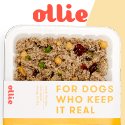 |
Varies |
A+
|
| #1 |
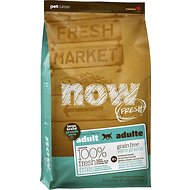 |
$3.16/lb |
A+
|
| #2 |
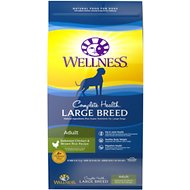 Wellness Large Breed Complete Health Adult Deboned Chicken & Brown Rice Recipe |
$1.98/lb |
A
|
| #3 |
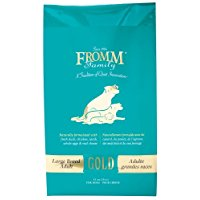 |
$1.30/lb |
A
|
| #4 |
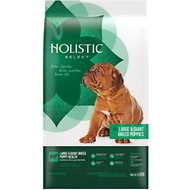 |
$2.00/lb |
A
|
| #5 |
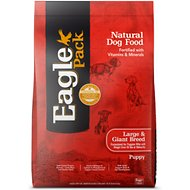 |
$2.00/lb |
A
|
| #6 |
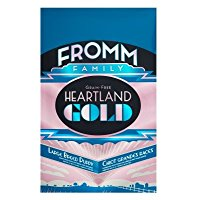 |
$4.66/lb |
A
|
Conclusion
There are lots of good foods for dogs and puppies today. These are just a few suggestions. You can choose from foods with raw-infusions, organic foods, biologically-appropriate foods with more protein, and the list goes on. What’s important is to find the food that suits your Rottweiler best. Use what you’ve learned about your Rottweiler’s nutritional requirements and apply it when you select a dog food formula. If you need some help, check out the foods suggested here, or some of the foods recommended on Pawster.

